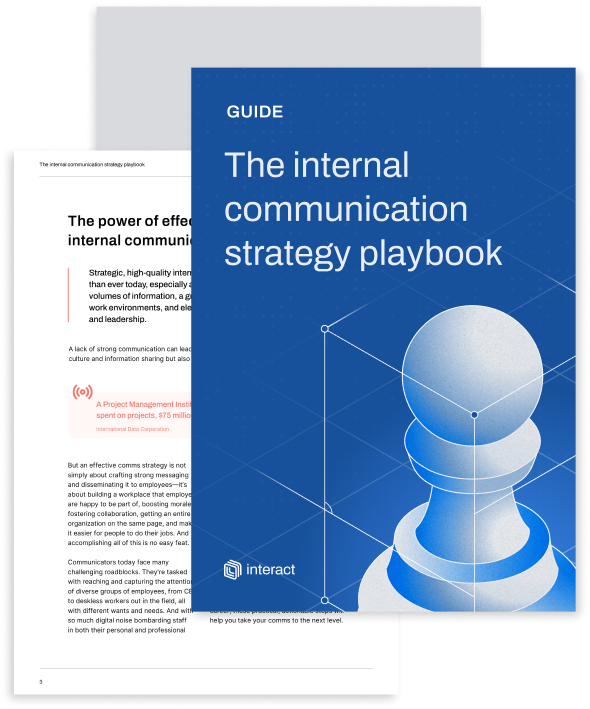Struggling to get your message heard? Try these quick tips to get your employees engaging with your internal communications.
Whether you work in a communications role or you’ve simply been passed the task of getting a message out, the chances are, you’ve faced the frustration that comes from getting employees to actually read your content.
Whether it’s sending out new policies, setting out this quarter’s company strategy, shouting out about recent successes or simply letting your staff know that the office kitchen needs a touch of TLC, the need to communicate internally never ends.
14 steps to great internal comms
The trouble is, all these notifications add up. Soon, your internal comms are nothing but another source of digital noise, and making their way into the virtual waste bin without so much as a cursory glance. Not only is your message not getting through, but that vicious cycle can quickly escalate – and we stop going to the effort. If no-one is reading them anyway, why bother?
If you’re tired of trying to crank out endless streams of internal communication to appease employees and management alike, only to have them ignored, take 10 minutes to read our simple hacks.
1) Ask, do we actually need to communicate?
Do your staff really need to know that the printer ink cartridge has been replaced? Or that the kitchen is out of 1% milk?
One of the simplest ways to increase engagement with your comms is to reduce the sheer volume of noise faced by employees. So, before you press that ‘Send’ button, ask the question – do I actually need to tell them this?
2) Communicate on a need-to-know basis
We’ve all been on the receiving end of seemingly irrelevant messages that have nothing to do with us. After a while we simply assume the messages aren’t worthy of our time – and into the trash they go.
So, take the time to target messages to the right audience. If you need to let workers know about building works in the office, take out the remote workers from the mailing list; if it’s a change to how sales are communicated, send it to the sales guys. Be selective.
3) Pay attention to your titles and headers
It’s the golden mantra of every marketer and communicator out there: you’ve got to nail the title.
Every reader, viewer or listener engages with the headline, title or intro first. You have precious few seconds to grab them, so why waste your opportunity with “HR Policy Update: Corporate Benefit Information and Claim Process” ? They’ll have switched off before even making it to the end. There’s a case for learning from marketing formulas for catchy headlines, and taking just a little extra time to get them right.
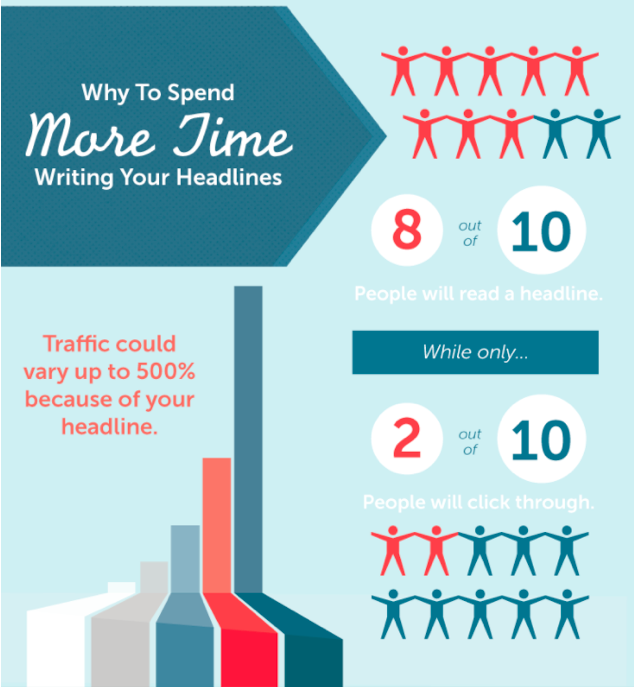
4) Personalize it
We’re used to having tailored messages in our normal lives, and now we increasingly expect the same at work.
Once you have a defined audience, tailor and personalize the content. This could be by using the employee’s names, changing the language, the tone, the type of content – and much, much more. Read our previous blog on bringing digital personalization to internal comms for some great ideas and tips.
5) Explain the ‘what’s in it for me?’
Communicate the value for the employee upfront. It will pique their interest and get them to click through and read on.
Consider the difference between, “Updates to expenses process and policy”, and “Get more $$ per mile and faster expenses payments. Policy update.” Once your employees know what’s in it for them, you’ve got their attention.
14 steps to great internal comms
6) Identify – and push – the hook
Maybe there’s not necessarily a tangible ‘value’ for the employee, and instead, you’re charged with simply distributing some news, reporting on an event, delivering an update. Think like a reporter and seek out the ‘hook’ to put upfront.
If you’re reporting on a conference, what was the highlight or most memorable moment? What’s the greatest notable achievement in that quarterly update? Leading with the most interesting part will get your staff involved.
7) Speak their language
It’s amazing how perfectly normal, human people turn into jargon-spewing robots the moment they’re asked to write for internal comms purposes, but it’s time to drop the corporate speak.
As a general rule of thumb, keep it simple and write like you’re doing it for a 12-year old. If the comms is coming from a specific department or is about a niche subject, put it through the comms department to sanity check and, if necessary, ‘translate’ for a broader audience.
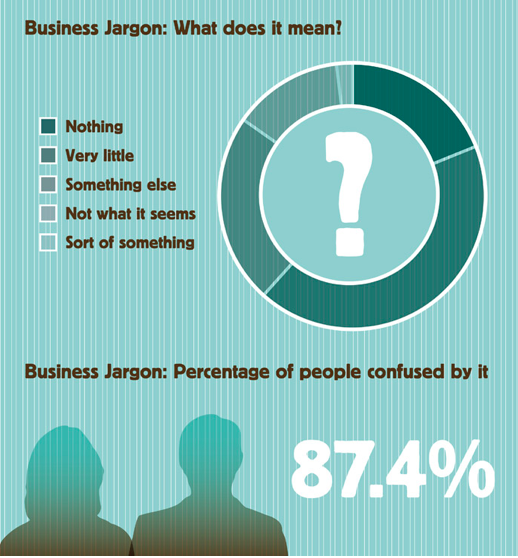
8) Make it short and sweet
Why take 25 words to say something you can manage in 5?
When under pressure, we feel a need to ‘fill the silence’. The result is waffling, rambling or simply unnecessary content – and it loses the reader. Think economy of words and remember those short attention spans. Once you’ve drafted your internal comms, take time to slice and dice.
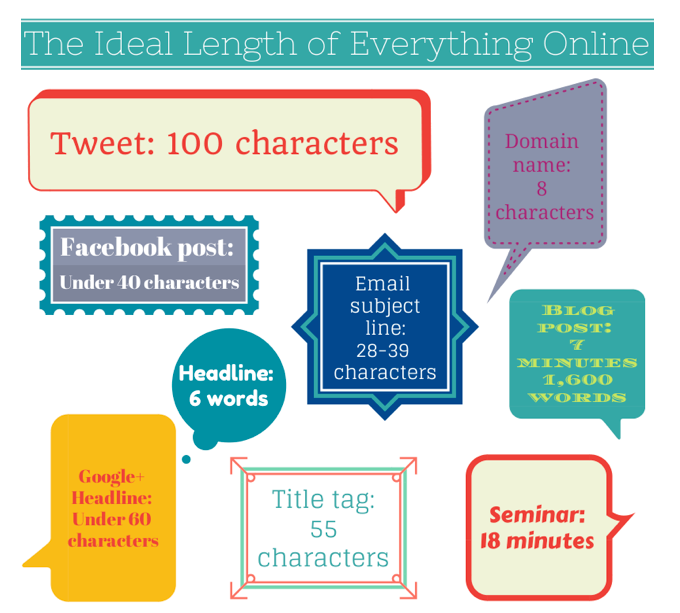
9) Bring in some personality
Following on from the step away from a business tone, don’t be afraid to inject a bit of personality and individual tone into your comms – if the occasion warrants it, of course.
If everything is written in a dry, standard tone of voice, your employees will quickly switch off. Have some fun with it, or ask for contributions and guest writers to mix it up once in a while.
10) Go after the human-interest angle
Who doesn’t love a bit of real life drama? Internal comms is no different.
If you’re tasked with producing a piece of content, try and find an angle that talks about individuals or specific employees. People like to read or hear about others like them, and will be far more likely to read on and engage.
For example, if you’re announcing a new product, why not get an employee to road-test it and write up their experience? Or if you’re celebrating a great month or quarter, talk about the individuals and teams that made it happen – and how.
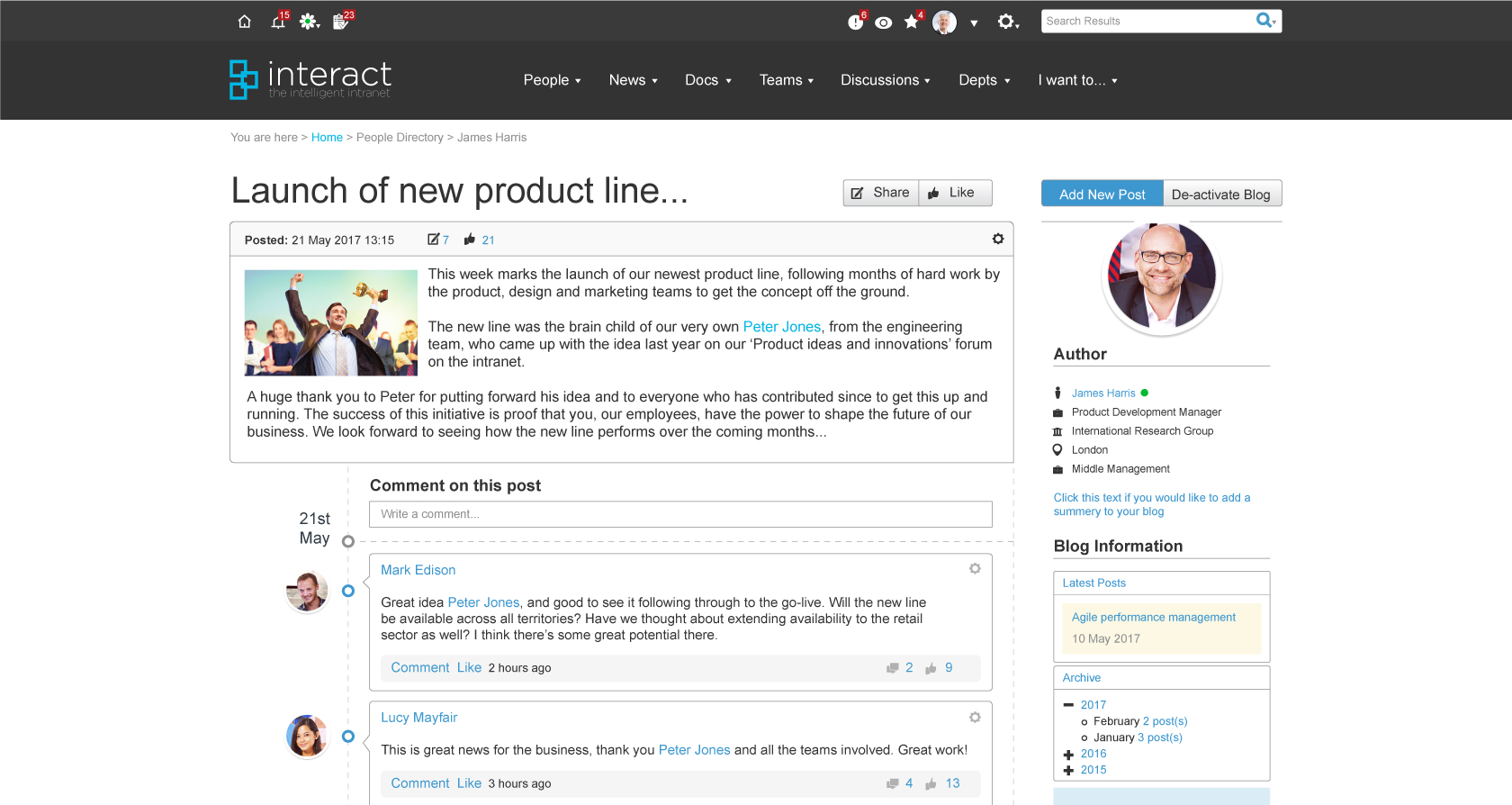
(Had a major development, a successful month? When communicating it, recognize the individuals or teams involved. This makes the communication more personal and engaging for employees.)
11) Make it timely
Is the reason your employees aren’t feigning interest because they’re receiving this news secondhand? Perhaps it’s already done the rounds around the water cooler, or their manager communicated it two weeks back and now it’s considered old news.
Great comms can take time, especially if you’re piecing together a masterpiece. Or you may face red tape and logistical nightmares getting your message out. But there’s a balance to be reached. Endeavour to be the originator of news by acting quickly and making it timely. For more important (and time-consuming) stuff, consider embargo-ing the Big Announcement until you’re ready.
Careful though – as we explore in our eBook, Communicating Change, sitting on information can leave you vulnerable to backlash, and may even prove catastrophic for your business.
12) Give them a teaser
Never underestimate the power of suspense or a touch of ‘FOMO’ (fear of missing out). Dropping a few hints or giving employees a bit of a teaser, but withholding the full picture, can be a simple – yet effective – way to get them reading your internal communications.
Consider sending out a snippet of a bigger image, the first few seconds of a video, or even simply a one-liner “Guess what’s coming up next month…” with a link to more information. Don’t give them everything all at once. Once employees have made the commitment to that step, they’re more likely to stay – and engage.
14 steps to great internal comms
13) Get creative and play with media
Many of us will know this one already, but it’s too important to miss out. We covered both in our ‘Quick win internal comms hacks‘ blog, but video and visual are powerful tools at your disposal – use them. Think infographics, photos, even simple memes. They’re digestible, engaging and more likely to grab employees than a huge wad of text.
Best of all, thanks to wonderful advancements in apps and technology, there’s an easy to use tool for creating great engaging content for even the most technophobic of us out there. Try Magisto or Animoto to mix up your own videos, or play around with Canva to create great looking infographics and posters of your own.
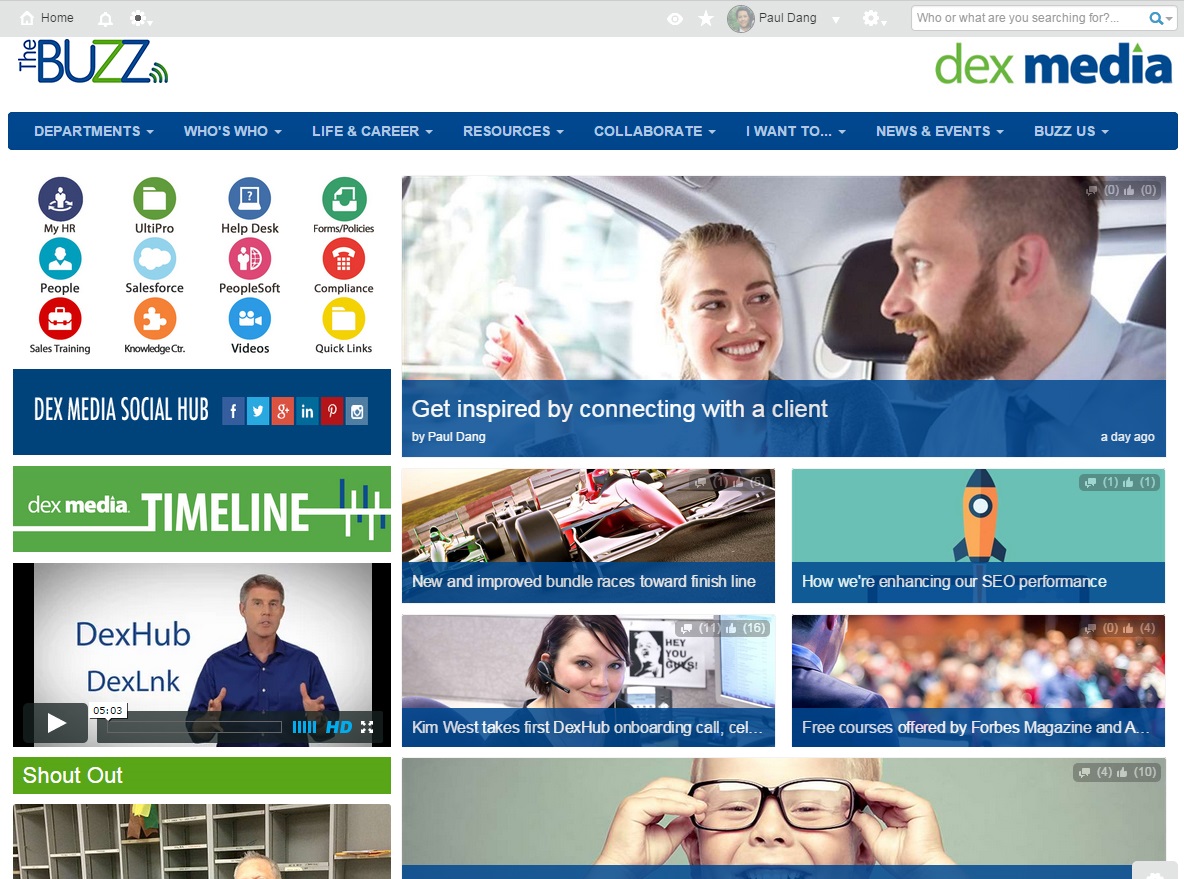
(Interact customer Dex Media show on their intranet homepage just how prominent use of images, video, icons and color can draw in employees – combining stock images, photographs, cartoons and more.)
14) Make it an interactive experience
Successful internal communication campaigns aren’t those that simply push or broadcast information: they’re the ones that create an interactive experience.
This may be as simple as asking employees to comment, or put forward their ideas, suggestions and responses to a particular communication. Use a collaborative comms platform such as intranet software, which has social features to give employees a voice. There’s still a place for the trustworthy survey and poll, too.
15) Give them an incentive
OK, it seems a bit of a cheat to ‘buy’ your employees’ attention, but we’re not suggesting giving away freebies with every company newsletter or status update. A periodic use of giveaways or other incentives that give your employees a reason to engage with your content – and will keep them coming back and opening those communications.
16) Mix up and combine your communication channels
Are you still putting all your internal communications eggs in one basket? Spring for a multi-pronged plan of attack with your internal communications plan, and you’re more likely to get your employees engaged.
This works on two levels: firstly, not every employee will subscribe to, or engage with, a single channel. Secondly, your message is more likely to get through (and stick!) if it’s seen – even subliminally – several times. Different channels are also more effective for different types of message. So back up your newsletter with an email, an intranet blog post, a poster, a tweet and a text. Think big, and go wide.
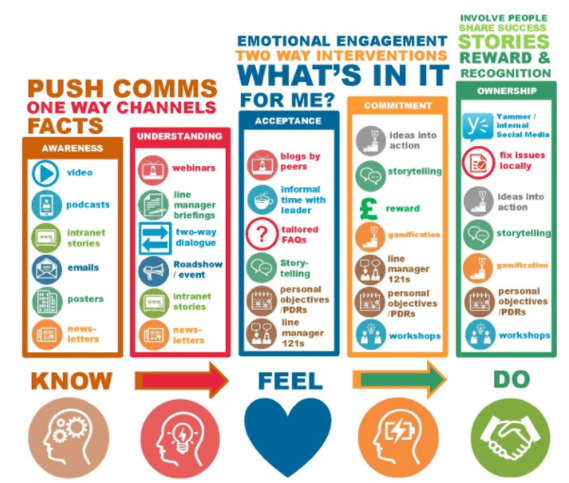
17) If communicating via the web – make it web-based
Sending out your communication via email? Placing your content up on the intranet ? Looking to get engagement from remote or field-based workers, accessing information on their cellphones or mobile devices?
Think about how you’re presenting your comms. Word documents of PDFs attachments don’t have the flexibility or click-through rate of a web-based message. They may be hard to access, download or read on different devices, or could lose employees by giving them too-long a journey.
18) Re-send, then re-send again
No marketer can boast that they’ll hit every prospect first time, so why do we still harbor the belief that a single email shot will do?
If you’re going after the multi-channel approach, this will help: but a quick and easy win is to change the header or message slightly, and then press re-send – particularly for the Big Important Stuff.
Cutting through the noise
Getting your message through may at times feel like an impossible task. If an employee is sat at their desk for lunch and has a choice between scrolling their Facebook feed or perusing the company newsletter, it’s often a no-brainer: and internal comms will come off second best.
However, the explosion of technology in the workplace also offers unrivalled opportunity. We have internal communication tools that didn’t even exist in the business circuit 25, 10 or 5 years ago. Just making seemingly small yet significant ‘tweaks’ and adjustments to the way we deliver our message can have a powerful impact – and get our employees to sit up, and listen.
Have we missed anything? Do you have any hacks that our readers would find useful? Leave us a comment and let us know!
